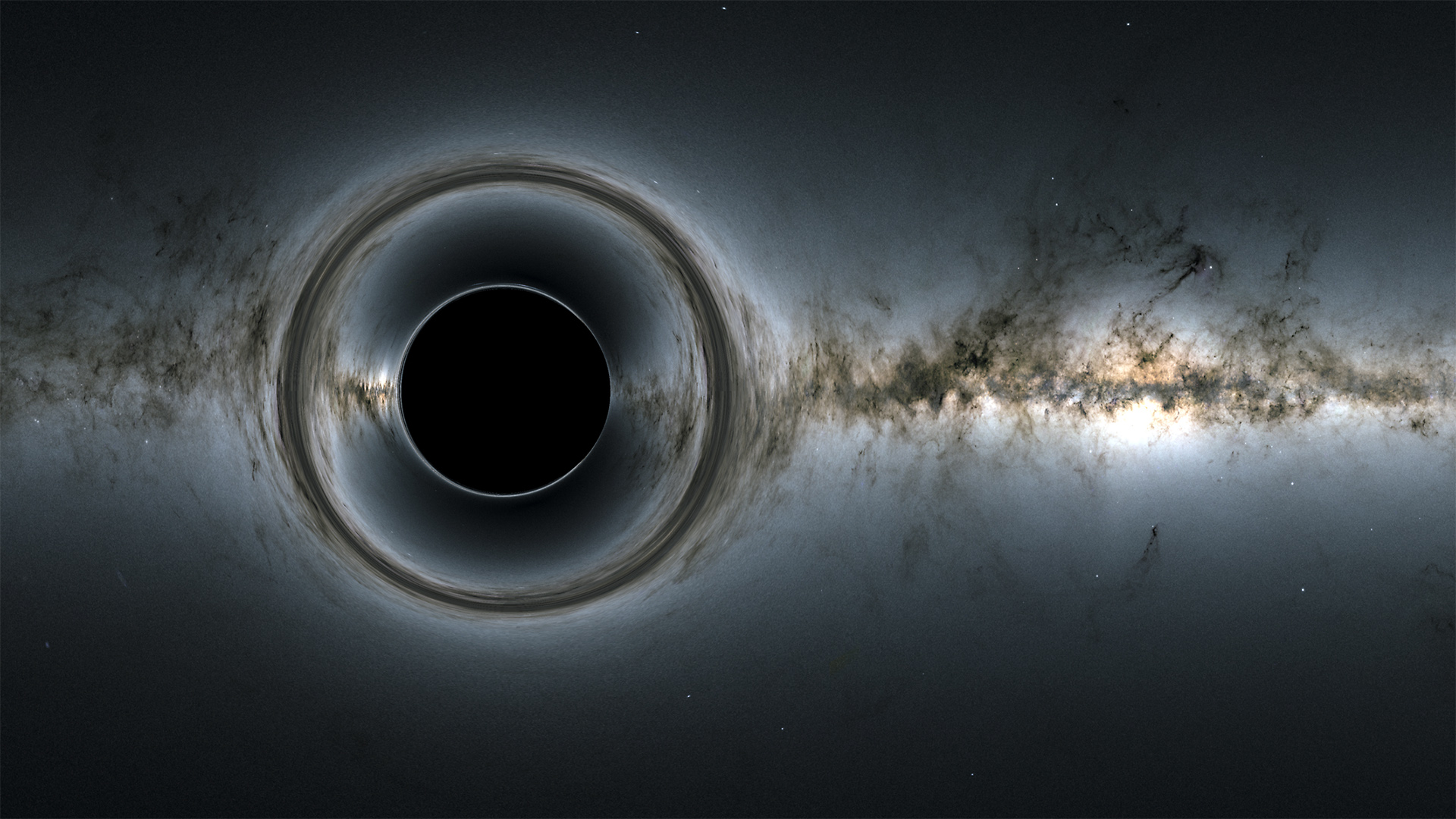Can energy be sucked out of a black hole?

Mathematical physicist proposed making 'black hole bombs.'

A rotating black hole is such an extreme force of nature that it drags surrounding time and space around with it. So it is only natural to ask whether black holes could be used as some sort of energy source. In 1969, mathematical physicist Roger Penrose proposed a method to do just this, now known as the "Penrose Process."
The method could be used by sophisticated civilizations (aliens or future humans) to harvest energy by making "black hole bombs." Some of the physics required to do so, however, had never been experimentally verified — until now. Our study confirming the underlying physics has just been published in Nature Physics.
Around its event horizon (the boundary around a black hole beyond which nothing, not even light, can escape), a rotating black hole creates a region called the "ergosphere." If an object falls into the ergosphere in such a way that it splits — with one part falling into the black hole and the other escaping — the part that flees effectively gains energy at the expense of the black hole. So by sending objects or light toward a rotating black hole, we could get energy back.
But does this theory hold up? In 1971, the Russian physicist Yakov Zel'dovich translated it to other rotating systems that could be tested back on Earth. The black hole became a rotating cylinder made from a material that can absorb energy.
Zel'dovich imagined that light waves could extract energy from the cylinder and become amplified. For the amplification effect to work, however, these waves need to have something called "angular momentum," which twists them into spirals.
When twisted light waves hit such a cylinder, their frequency should change because of something called the "Doppler shift." You have most likely experienced this when listening to an ambulance siren. When it moves toward you it has a higher pitch than when it moves away from you — the direction of travel changes the pitch of the sound. In a similar way, changes in rotational speed alter the perceived frequency of a light wave.
If the cylinder rotates fast enough, the altered wave frequency should drop so low that it will become negative (which simply means that the wave spins in the opposite direction).
Breaking space news, the latest updates on rocket launches, skywatching events and more!
Positive frequency waves should be partly absorbed by the cylinder, losing energy. But the negative frequency waves would transform this loss into gain and instead become amplified by the cylinder. They would extract energy from the rotation, just like the object escaping from Penrose's black hole.
Testing Zeldovich's theory may appear simple. But the rotating object needs to spin at the same or higher frequency as the waves. To amplify visible light waves, which oscillate at a frequency of hundreds of trillions of times a second, you would need to rotate an absorbing object billions of times faster than anything that's mechanically possible today.
Breakthrough at last
Light travels at about 300 million meters per second. So to make the theory easier to test, we opted to use sound waves, which travel roughly a million times slower, meaning we didn't need the absorber to rotate so quickly.
To create a twisted sound wave, we used a ring of speakers all emitting the same frequency but starting at slightly different times, so the sound follows a spiral. For our rotating absorber we used a piece of sound-absorbing foam attached to a motor. Microphones placed inside the foam allowed us to record the sound after it had interacted with the rotating absorber.
We found that when the foam span slowly (at a low frequency), the sound we recorded was quieter because it had been absorbed by the foam. But when we spun the foam fast enough for it to Doppler shift the frequency of the sound waves enough to make them negative, the sound became louder.
This can only mean that the sound wave had taken energy from our rotating absorber, finally proving the 50-year-old theory.
Black hole bomb
All this of course does not explicitly verify that Penrose's idea for energy extraction will actually work for a black hole. Rather, our experiments verify the counter-intuitive underlying physics by showing that shifting wave frequencies from positive to negative results in the waves gaining rather than losing energy.
While we are not anywhere close to extracting energy from a rotating black hole, this doesn't mean it couldn't be done by a very advanced alien civilization — or indeed our own civilization in the distant future. Such a civilization could build a structure around the black hole that rotates with it and then drop asteroids or even electromagnetic waves into it what would be reflected with more energy.
Even better, they could build a so-called black hole bomb by completely surrounding the black hole with a reflecting mirror shell. Light shone into the black hole would return amplified, and then reflected back by the mirror to the black hole to be amplified again, and so on.
The energy would increase exponentially in a back-and-forth runaway explosion. But by letting some of this amplified light out of the shell through a hole, you could control the process and produce essentially limitless energy.
Although this is still science fiction, in a very distant future when the universe has all but died and the only remnants of galaxies and stars are black holes, this method would be the only hope for any civilization to survive. This would be a universe with immense, isolated sources of energy, shining bright in an otherwise completely black sky.
This article was originally published at The Conversation. The publication contributed the article to Live Science's Expert Voices: Op-Ed & Insights.
Daniele Faccio, Professor of Quantum Technologies, University of Glasgow
Marion Cromb, PhD Candidate in Physics, University of Glasgow
